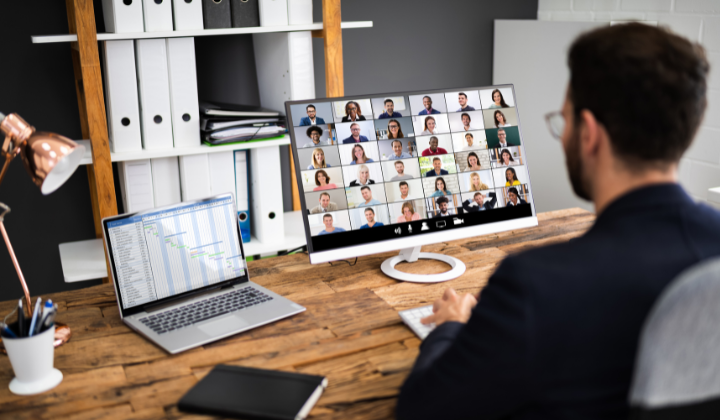
– Manuscript –
A recent public opinion study suggests a limited number of Americans are likely to continue using online services put in place during COVID-19 restrictions.
In 2020, many daily routines went online, including schooling and office work. Food delivery services, online activities, teleworking, and telemedicine became more normal. Many services were created, reimagined, or popularized during the pandemic. Some services, such as online shopping and video conference calling, were in wide use before the pandemic.
But researchers for The Associated Press-NORC Center for Public Affairs Research wanted to know if the new online services would remain popular.
The study found that fewer than one in three Americans said they were very likely to use new, online services at least some of the time.
The study found that close to half of adults in the United States said they were not likely to attend online, or virtual, activities or receive virtual health care. The Americans also said they were not likely to use food delivery or pickup services after the coronavirus pandemic is over.
Close to half of those questioned said they wanted virtual options for health care, community events, exercise, or religious services to continue after the pandemic.
Donna Hoffman is director of the Center for the Connected Consumer at George Washington School of Business. Hoffman said, “Rather than this either-or, I think we’re likely to be facing a hybrid future.”
She said, “People have found convenience in some of these virtual options that just makes sense…”
Hoffman added that many virtual options may have started during the pandemic. But they do not necessarily have anything to do with health safety. They are simply easier.
Food delivery services
Cornelius Hairston, a 40-year-old father, is married and his wife works on the front line of the health care field. So, he said his family was very careful throughout the pandemic. He said they only went out when necessary.
Hairston said that his twin four-year-old boys are “COVID babies.” For much of their young lives, the children did not enter a food store. The family used delivery services to avoid going to stores. But in the future, he expects to use delivery services “from time to time” or not often.
Others say some food delivery or food pickup services are not as good as buying in-person.
Tony DiGiovane told the AP that he felt nervous about high COVID-19 infection numbers in his home state of Arizona. So, the 71-year-old used food delivery services. He found them to be troublesome.
“By the time I picked up the stuff,” he said, “I needed more stuff.” He added that there was always something “missing or wrong” on pickup or takeout orders.
Online healthcare
For Angie Lowe, a 48-year old woman from the state of Illinois, telemedicine was convenient. Her first telemedicine appointment was early in the pandemic. She was able to talk with a doctor without missing work or driving to a medical center.
Lowe said, “It was my first telemedicine appointment, but it won’t be my last. If I can do it, I’m going to do it.” She and her husband returned to doing things in public more than a year ago, but she continues to use telemedicine.
Sixty-three-year-old Karen Stewart understands that video calls are useful. She also sees some of her doctors online and likes that she does not have to drive to her appointments.
However, she said it was “scary” when all of her appointments before a medical operation were online. She wanted more “hands on” care. Stewart added, there are “things that a doctor might pick up on that they can’t see online.”
The pandemic created a chance to balance in-person and virtual services to support the physical and mental health of older adults, said Alycia Bayne. She is a researcher at NORC.
Bayne said telemedicine could help people who have difficulty traveling, who do not live near a medical center, or who live alone.
But technology has limits. Bayne said technological difficulties may explain why the public opinion study found that older adults are less likely to use digital services after the pandemic.
She noted, however, that the AP-NORC study also found similar percentages of adults across all ages saying virtual options should continue after the pandemic.
“They recognize the benefits of virtual services,” she said. “But they’re also ready to start getting back to their pre-pandemic routines.” Bayne added the new services are an added benefit for people needing them: “The silver lining, of course, is that these services are now available.”
Words in This Story
routine –n. a regular way of doing things in a particular order
delivery –n. the act of taking something to a person or place
option –n. something that can be chosen; a choice or possibility
hybrid –n. the combination of two or more things
convenience –n. a quality or situation that makes something easy or useful for someone by reducing the amount of work or time required to do something : convenient –adj.
stuff –n. materials, supplies or equipment
appointment –n. an agreement to meet with someone at a particular time
benefit –n. a good or helpful result or effect
silver lining –idiom something good that can be found in a bad situation
*This article has been edited and reprinted from VOA Learning English with permission from Voice of America (VOA) for use in English language materials.
